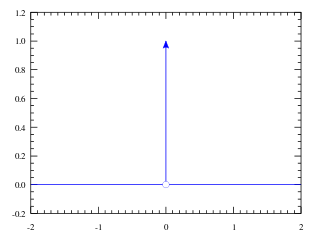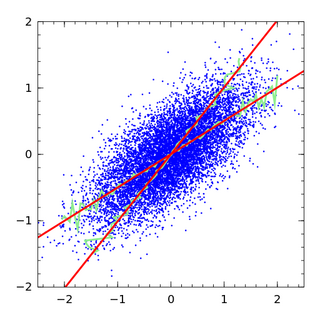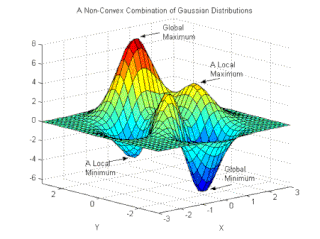Bus engine replacement model
The bus engine replacement model developed in the seminal paper Rust (1987) is one of the first dynamic stochastic models of discrete choice estimated using real data, and continues to serve as classical example of the problems of this type. [4]
The model is a simple regenerative optimal stopping stochastic dynamic problem faced by the decision maker, Harold Zurcher, superintendent of maintenance at the Madison Metropolitan Bus Company in Madison, Wisconsin. For every bus in operation in each time period Harold Zurcher has to decide whether to replace the engine and bear the associated replacement cost, or to continue operating the bus at an ever raising cost of operation, which includes insurance and the cost of lost ridership in the case of a breakdown.
Let  denote the odometer reading (mileage) at period
denote the odometer reading (mileage) at period  ,
,  cost of operating the bus which depends on the vector of parameters
cost of operating the bus which depends on the vector of parameters  ,
,  cost of replacing the engine, and
cost of replacing the engine, and  the discount factor. Then the per-period utility is given by
the discount factor. Then the per-period utility is given by

where  denotes the decision (keep or replace) and
denotes the decision (keep or replace) and  and
and  represent the component of the utility observed by Harold Zurcher, but not John Rust. It is assumed that
represent the component of the utility observed by Harold Zurcher, but not John Rust. It is assumed that  and
and  are independent and identically distributed with the Type I extreme value distribution, and that
are independent and identically distributed with the Type I extreme value distribution, and that  are independent of
are independent of  conditional on
conditional on  .
.
Then the optimal decisions satisfy the Bellman equation

where  and
and  are respectively transition densities for the observed and unobserved states variables. Time indices in the Bellman equation are dropped because the model is formulated in the infinite horizon settings, the unknown optimal policy is stationary, i.e. independent of time.
are respectively transition densities for the observed and unobserved states variables. Time indices in the Bellman equation are dropped because the model is formulated in the infinite horizon settings, the unknown optimal policy is stationary, i.e. independent of time.
Given the distributional assumption on  , the probability of particular choice
, the probability of particular choice  is given by
is given by

where  is a unique solution to the functional equation
is a unique solution to the functional equation

It can be shown that the latter functional equation defines a contraction mapping if the state space  is bounded, so there will be a unique solution
is bounded, so there will be a unique solution  for any
for any  , and further the implicit function theorem holds, so
, and further the implicit function theorem holds, so  is also a smooth function of
is also a smooth function of  for each
for each  .
.
Estimation with nested fixed point algorithm
The contraction mapping above can be solved numerically for the fixed point  that yields choice probabilities
that yields choice probabilities  for any given value of
for any given value of  . The log-likelihood function can then be formulated as
. The log-likelihood function can then be formulated as

where  and
and  represent data on state variables (odometer readings) and decision (keep or replace) for
represent data on state variables (odometer readings) and decision (keep or replace) for  individual buses, each in
individual buses, each in  periods.
periods.
The joint algorithm for solving the fixed point problem given a particular value of parameter  and maximizing the log-likelihood
and maximizing the log-likelihood  with respect to
with respect to  was named by John Rust nested fixed point algorithm (NFXP).
was named by John Rust nested fixed point algorithm (NFXP).
Rust's implementation of the nested fixed point algorithm is highly optimized for this problem, using Newton–Kantorovich iterations to calculate  and quasi-Newton methods, such as the Berndt–Hall–Hall–Hausman algorithm, for likelihood maximization. [5]
and quasi-Newton methods, such as the Berndt–Hall–Hall–Hausman algorithm, for likelihood maximization. [5]
Estimation with MPEC
In the nested fixed point algorithm,  is recalculated for each guess of the parameters θ. The MPEC method instead solves the constrained optimization problem: [4]
is recalculated for each guess of the parameters θ. The MPEC method instead solves the constrained optimization problem: [4]

This method is faster to compute than non-optimized implementations of the nested fixed point algorithm, and takes about as long as highly optimized implementations. [5]
Estimation with non-solution methods
The conditional choice probabilities method of Hotz and Miller can be applied in this setting. Hotz, Miller, Sanders, and Smith proposed a computationally simpler version of the method, and tested it on a study of the bus engine replacement problem. The method works by estimating conditional choice probabilities using simulation, then backing out the implied differences in value functions. [8]




























































